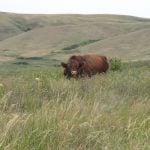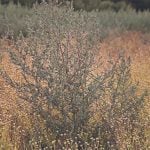Riparian areas used to be thought of as areas of exclusion when it came to grazing. But those days are over.
“In the past, a lot of the water courses were suffering bank or shoreline damage because they weren’t being protected,” says Greg Paranich, agriculture field specialist with the Grey Wooded Forage Association, based in west-central Alberta. This also leads to a lot of the vegetation being overgrazed by livestock. So instead, managers fenced these areas off to livestock to alleviate the problem.
However, some of the fences weren’t defining the riparian area — they were defining corridors. “We weren’t really addressing the riparian area,” Paranich says.
Read Also

The Canadian Cattle Association’s international advocacy efforts
Global ag policies affect Canadian food policy, so the Canadian Cattle Association participates in international and domestic forums
The true riparian area extends from the water’s edge to the upland vegetation. It is generally thought of as the area where moisture-loving vegetation occurs along the edge of a natural water body.
Producers began contacting Paranich and saying that there was a lot of dead growth and invasive species coming into these exclusion areas, as well as an increased fire risk. The question was how to improve the riparian area with livestock, without damaging the things we want to protect. So the Grey Wooded Forage Association partnered with Cows and Fish and ALUS to create riparian field schools.
“We had all the people around the same table who were interested in improving grazing management and protecting the environment. But how do we do a better job on these riparian areas without removing grazing?”
They wanted to educate producers on why riparian areas are important, how to identify them and how can we change what we have been doing.
“Here are your basic grazing principles, and this why it makes sense to graze riparian areas, but this is why we use these principles to graze (riparian areas) in a responsible manner,” Paranich says. With this philosophy in mind, making this happen on a day-to-day basis meant getting all the key components in place to make it practical for producers.
First, they identify the areas that had been protected from grazing but had a lot of acres in them. Those areas were now referred to as riparian pastures. “This is a pasture that we manage different from anything else,” Paranich says.
But fencing was still needed to make sure the area was protected, while also allowing livestock into areas where it was okay for them to be. This is where portable electric fencing technology allowed livestock to graze the areas that were previously unavailable to them. At the field schools, a company called Range Ward delivers information on electric fencing essentials and demonstrates a portable electric fencing trailer called the Razer Grazer.
At the field school, grazing basics are discussed, as well as fencing design. Paranich says that fencing design is essential, and depends on the recovery of the riparian zone.
“If it was an emerging recovery of a riparian area, we might set the portable fence a little further out from the bank and let the areas we want to recover without grazing for a year or two, and then lightly graze it.” In wetter years, the fence might be farther from the bank, while in drier years, the fence might be closer to the bank. The portable fence allows this flexibility.
Now livestock are allowed to graze the riparian pastures but grazing management components, such as timing, duration and stock density, need to be figured out. When looking at the timing of grazing for these riparian pastures, Paranich says a good rule of thumb is to graze in late July to early August. Generally, this is a time in summer when it is hot and dry, so the cattle’s impact is minimized. Biologically, the plants have been allowed to grow, bloom, go to seed and harden off, making them less vulnerable to grazing damage. Also, birds have finished nesting.
The number of livestock (or density) to graze comes down to the assessment of the riparian area. “That’s part of the learning curve,” Paranich says. “We want to minimize that impact (from the cattle) versus a regular pasture because we’re only going in once a year.”
A large determination of how many animals to graze depends on how much impact the producer wants the cattle to make in that area. Enough cattle are needed to graze down the area down a bit — but not too much.
Grazing too heavily can have negative consequences “because we want regrowth to occur,” says Paranich. But grazing is needed to stimulate those plants and get them working again.
“They (the plants) need to get back on the payroll and start working, building roots, soil carbon and soil microbes,” Paranich says. “We have to keep that machine running.”
The duration of livestock in riparian pastures has many facets to consider. Pasture size and the number of livestock grazing play a large role. If pasture sizes are changing every year, then the timing in each pasture will have to be evaluated yearly.
“It’s not just, ‘We’re going to go in there for three days.’ It all depends on the circumstances,” Paranich says. Some pastures may be grazed for only a day while others may be grazed longer.
“That’s what we’ve looked at,” Paranich says. “Let’s redefine how we manage riparian areas by looking at them as riparian grazing areas that need a different management.” Participating producers have been able to see how these areas respond to grazing in the few short years they have been looking at riparian areas this way.
On one participant’s pasture, they made larger pastures into smaller cells with separate riparian pastures. As they grazed each cell, they skipped grazing the riparian area on the first pass to give the area some time to recover, as it had been heavily grazed in the past.
“What we saw that first year, I didn’t expect to see until maybe three years,” Paranich says. “The response in that situation was where we saw cattails starting to poke up.”
The successes that Paranich has seen with producers have him excited for the future.
“We have seen what we can do when we protect a riparian area. But also we can use that riparian area in the overall grazing plan. It gives us another option.”
















